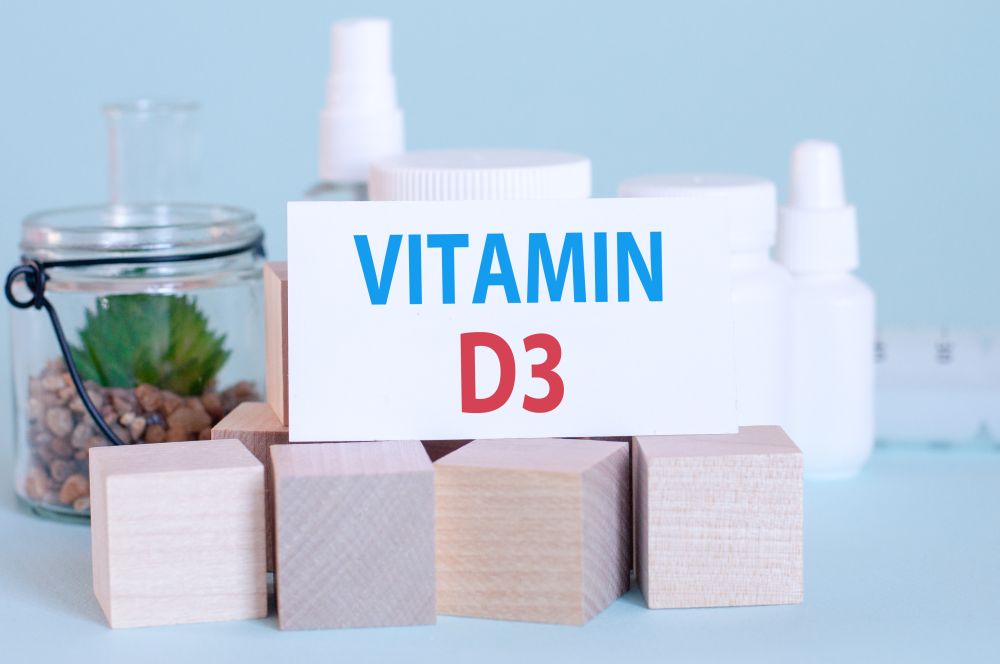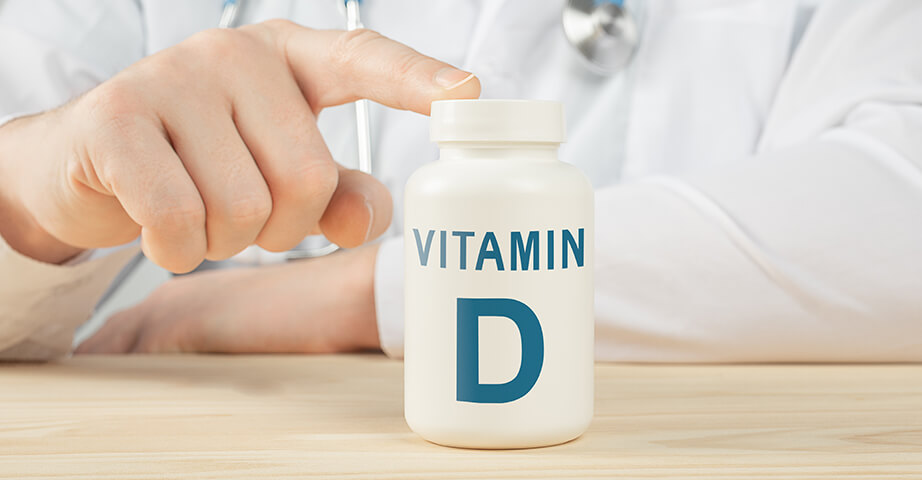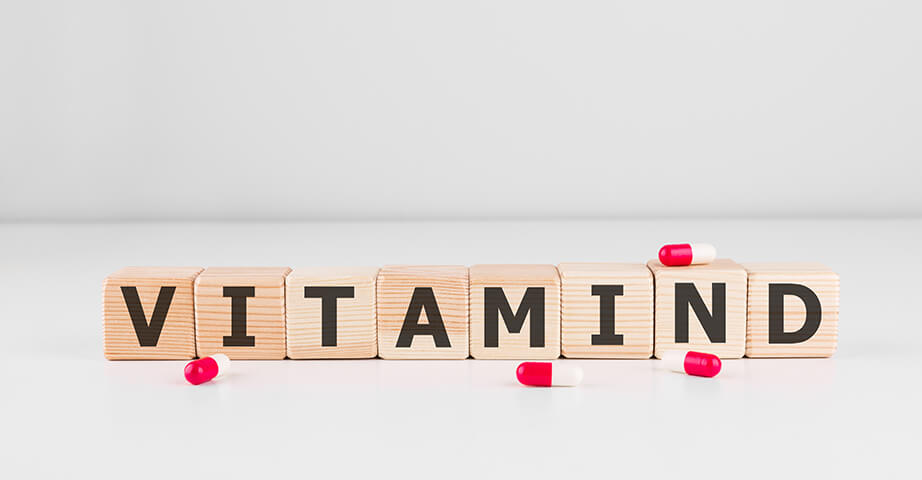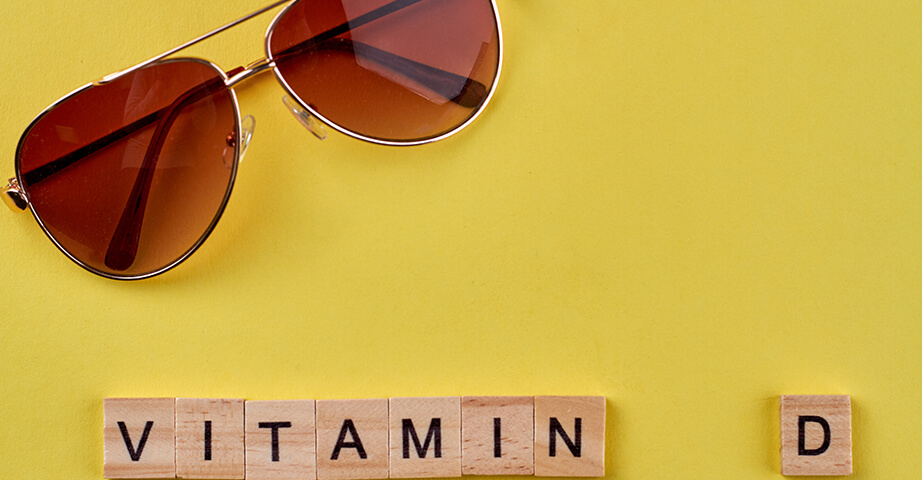Vitamin D3 - how important is it in the proper functioning of the organism?

We are constantly being told about the importance of vitamin D3 in the proper functioning of the human body, especially during the autumn and winter periods when we suffer from a lack of sunlight. This is not accidental, as this vitamin can be easily called one of the most important ones. It will be beneficial to learn about the features of this vitamin and find out how it affects us, what exactly it does, what are its sources, and what are the risks of deficiency.
Vit D3 from the sun - what is it all about? Biosynthesis.
Why during the autumn and winter months are we constantly bombarded with advertisements of supplements providing vitamin D3? It's all about our contact with the sun, which we can't get enough of at this time. Why is it so important? We need to think about biology, more specifically about the biosynthesis of this vitamin in the organism. Both vitamin D2 and D3 are not biologically active. The provitamin (a chemical compound from which the vitamin is formed as a result of appropriate reactions) of D3 is a derivative of cholesterol - 7-dehydrocholesterol, which in the skin (especially in the epidermis) under the influence of sunlight, or rather ultraviolet radiation that it emits, is converted into previtamin D3. From this point, within a few hours, the heat energy from the sun's rays converts it into vitamin D3 or more accurately - cholecalciferol. However, sun exposure would not cause our body to produce too much of this vitamin. In this situation, the excess of pre-vitamin and vitamin is decomposed.
Vitamin D3 effects
Most of us tend to associate vitamin D3 with the fact that it is essential for the proper functioning of the skeletal system. However, not only our bones need it. Many other systems of the human organism also require it.
The skeletal system
- During the period of development, vitamin D3 is important for the formation of bones and teeth.
- Hypovitaminosis of this vitamin in children leads to rickets, impaired bone mineralisation and reduced bone mass.
- Hypovitaminosis in adults causes bone pain, osteomalacia and osteoporosis.
- It has a significant effect on bone metabolism.
- It can influence the immune system's fight against caries as it activates the relevant defence proteins.
Recommended products with vitamin D3
Immune system
- Vitamin D3 has immunomodulatory activity.
- It has an indirect antibacterial effect - activating genes that are responsible for encoding peptides with the characteristics of natural antibiotics, including cathelicidin, which is biologically active against various bacteria - including tuberculosis.
The nervous system
- There is a link between plasma vitamin D3 levels and sleep disorders.
Tissues
- Vitamin D3 stimulates the regenerative capacity of the liver.

Vitamin D3 among mothers-to-be
Mentioning vitamin D3 in the context of pregnant women is a crucial subject. In the past, some people thought that it could cause defects in the fetus. Nothing could be further from the truth - it is essential for keeping the mother and the baby healthy; it supports the condition of the skeletal system and the immune system, among other things. It is also worth highlighting that vitamin D3 deficiency in pregnant women is a serious public health problem.
In a study by Dr Wagner and his associates (Medical University of South Carolina), it was shown that vitamin D3 reduces the risk of pregnancy infections, as well as premature births. The strongest impact was observed among women taking 4,000 units of the vitamin daily. In addition, the study did not indicate any harmful effects of vitamin D3 during pregnancy - so pregnant women should not fear it. In our opinion, it is definitely worth a try.
Food sources of vitamin D3
Apart from the synthesis of vitamin D3 in the skin due to the sunlight, we can also get it from food. We should pay attention to provide ourselves with this vitamin from natural sources, and only when we notice its deficiency, reach for supplements. Nevertheless, in autumn and winter, when food is our only source of this vitamin, as we lack sunlight, supplements can be really beneficial.
What products contain vitamin D3?
- The meat of certain fish. Some fish, such as salmon, cod, tuna and eel contain the highest amount of cholecalciferol. Therefore, we can obtain vitamin D3 by eating fresh fish as well as their preparations, e.g. marinated tuna, tinned sardines or herring in oil.
- Tran. Known by everyone rather as a product for reliable immunity, oil from the liver of fish from the cod family is also a source of vitamin D3.
- Liver. Prepared quite often as a side dish with dinner, liver - for example, poultry liver is also a source of cholecalciferol.
- Cheese. Admittedly, it contains much less vitamin D3, than fish meat or cod liver oil, nevertheless, in the diet of dairy eaters, there is quite a lot of it, so it can be counted as one of the dietary sources.
- Egg yolk.
- Certain mushrooms.
- Cow's milk.
Some food products, in order to prevent vitamin D3 deficiency among people, are enriched with it. In European countries, these products are cereals and margarine, which in Poland must also provide vitamin A. In the United States, such products are, for example, yoghurt, milk, cereals, orange juice and margarine.
With adequate sunlight, our skin produces such quantities of vitamin D3 that there is no need to look for it in food. However, the situation changes with the autumn-winter period and the sun disappears behind the clouds for a few months. The situation is similar for people living outside of Poland; the further north or south you go concerning the circumpolar zone, the smaller the amount of vitamin D3 produced by the skin (due to the climate).
Vitamin D3 - Daily requirements
The norms of daily intake of vitamin D3 are slightly unclear, due to the specific nature of this vitamin. As we already know, its very important source (and often the only one; meeting 100% of the daily requirement) is biosynthesis in the epidermis. This is a factor difficult to measure precisely since the amount of vitamin D3 synthesised depends on the weather, the area of skin exposed to the sun, the length of exposure and several others. Although we can find different data on the appropriate daily dose of this vitamin, depending on the institution, the Polish Food and Nutrition Institute suggests the following:

The recommended intake of vitamin D3 according to the Polish Food and Nutrition Institute:
- Babies: recommended standard 20 µg, safe level 10 µg.
- Children (1-9 years of age): 15 µg, safe level 10 µg.
- Adolescents and people over 60: 10 µg, safety level 5 µg.
The official recommended intake of vitamin D3 according to the European Union is 5 µg per day.
Nowadays, studies that verify the recommended daily dose of this vitamin are still in progress. Nevertheless, it is estimated that the daily dose for a person with a light complexion is synthesised during a 10-15 minute exposure to sunlight, between 10 a.m. and 3 p.m. It has to be mentioned that dark skin, due to melanin that absorbs ultraviolet radiation, produces vitamin D3 up to 6 times slower than light skin.
The consequences of the wrong amount of vitamin D3 in the body
Both too little and too much vitamin D3 that you provide to your body can be harmful. As with many other vitamins, it is important to be aware of its intake and to stick to the daily dose recommended by experts. So what are the consequences of an inadequate amount of this substance in the body?
Vitamin D3 deficiency - effects
- Rickets in children and adolescents.
- Osteomalacia (bone softening) and osteoporosis in adults.
- Broken bones and curvature of the bones.
- Degeneration of the skeletal system.
- Skeletal deformity.
- Problems with the proper functioning of the nervous and muscular system.
- Inflammation of the skin and conjunctivitis.
- General weakness of the immune system.
- Weakening and loss of teeth.
- Hearing problems.
- Increased risk of autoimmune diseases, especially type I diabetes, bladder, breast, colorectal, colon and ovarian cancer, and Crohn's disease.

Vitamin D3 excess - consequences
- Potentially toxic amounts of vitamin D3 lead to hypercalcaemia (a condition of elevated serum calcium levels) and hyperphosphatemia (a condition in which serum organophosphate levels rise above a certain limit). Most of the symptoms that bother us if our body takes a too high dose of vitamin D3 are related to hypercalcaemia.
- Nausea and vomiting.
- Weakness, a tendency to tire easily and quickly.
- Constipation.
- Lack of appetite.
- Excessive thirst.
- Increased urine output.
- Itchy skin.
- Headaches.
- Formation of kidney deposits (nephrolithiasis).
- Formation of renal calcifications (nephrocalcinosis).
- Kidney failure.
- In children, delayed psychomotor development.
Vitamin D3 - supplements
Similarly to a large number of vitamins and minerals, vitamin D3 is available to buy in pharmacies in the form of various preparations. The most popular are tablets and capsules, however, to make sure that everyone can buy a product that suits their needs and preferences, there are also drops, lozenges and others. Such supplements are especially useful in autumn and winter when adequate exposure to the sun is not always easy to achieve. Ready-made products are also helpful if a deficiency is detected in the organism based on laboratory tests (e.g. blood tests). Often products with vitamin D3 are additionally enriched with vitamin K2. It should be remembered that a healthy lifestyle and supplementation will never replace a well-balanced diet adapted to the individual needs of the body. We should also pay attention to whether a given preparation does not clash with the drugs we take or if we are not hypersensitive to any of its components. If we decide to permanently include vitamin supplements in our diet, it is good to consult this fact with a doctor.
Vitamin D3 and blood tests
Often in the context of vitamin D3, the topic of blood tests for its concentration comes up. Of course, the GP may recommend this type of test, but scientists advise not to perform it prophylactically among healthy people, as well as those who do not belong to the high-risk group. The results of such tests do not have any significance in terms of further medical advice.
When it comes to prophylaxis - instead of tests, it is recommended to take vitamin D3 supplementation in the autumn-winter period (in a dose depending on age and weight; it is worth asking your doctor or pharmacist for advice). OstroVit Vitamin D3 4000 + K2 tablets are one of the products that can be used as a preventive measure.
However, there are situations in which a doctor orders a blood test to check the concentration of this vitamin, usually as a result of observing ailments and symptoms that may be related to an incorrect amount of D3 in the body.

